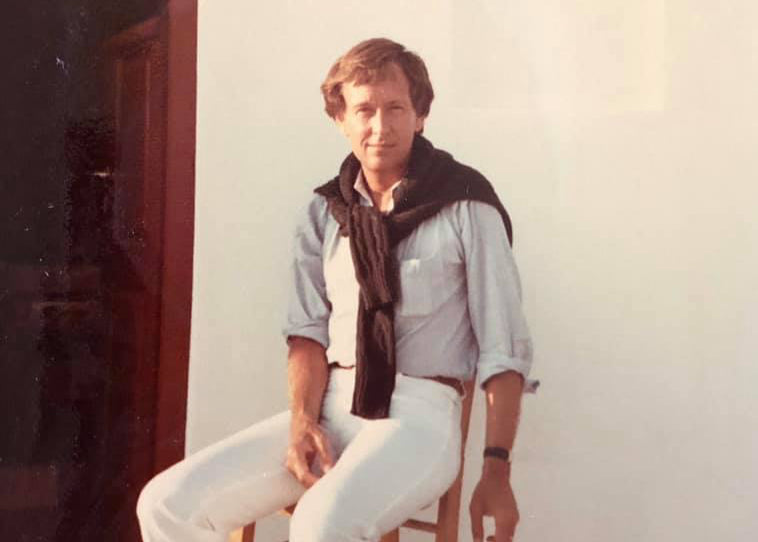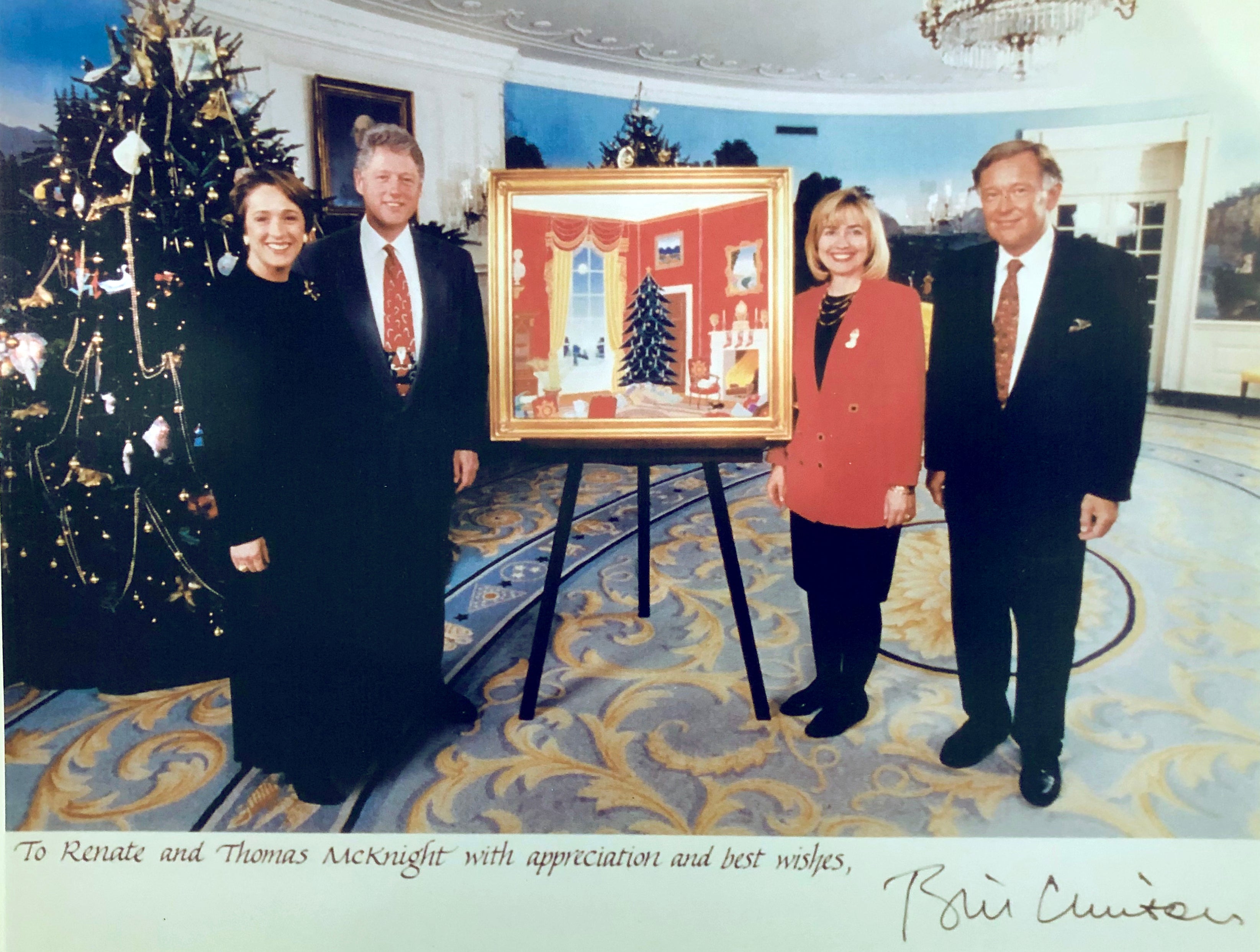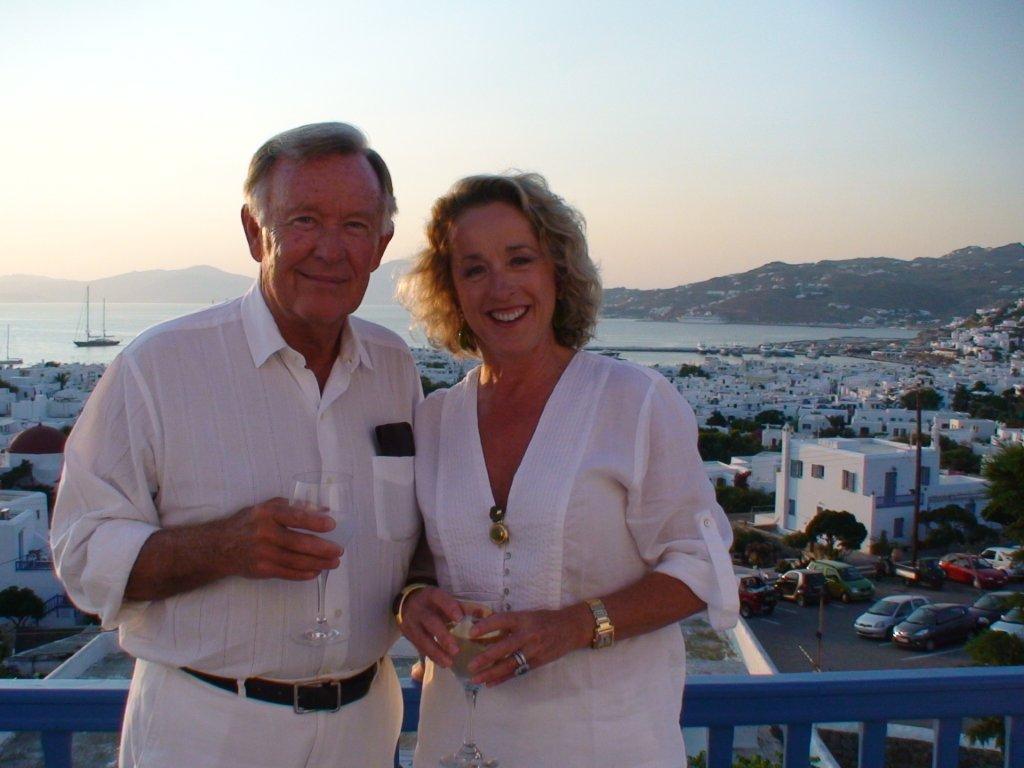
About the Artist
THOMAS MCKNIGHT
The worldwide appeal of Thomas McKnight's prints, paintings, and posters place him in an elite group of contemporary artists whose work can be instantly recognizable as his own. Be it a carnival in Venice, a sun-drenched street in Greece, a cozy well -furnished room, a tropical beach, or a mythological scene, McKnight's images invite you to experience the unfettered joy of living.

Early Life
After growing up in the suburbs of Washington, D.C., Montreal, and New York, McKnight studied art at Wesleyan University and spent a year in Paris developing a love for European civilization. He worked at Time magazine for eight years, interrupted by army service in Korea. In 1970, a vacation in Greece shifted everything. Two years later, he left corporate life and began painting full-time on the island of Mykonos, where his distinctive style took shape.

Career
In 1979 on Mykonos, he met Renate, a vacationing Austrian student. They married the next year and moved to America. During the 1980s, his work became widely popular. He produced hundreds of serigraph editions and published six books, including two in Japanese. His work reached an even larger audience in Japan, where he was commissioned to paint views of Kobe. In 1994, the White House asked him to create the first of three official Christmas card paintings for President Clinton.

Current Day
McKnight’s paintings are included in the permanent collections of the Metropolitan Museum of Art and the Smithsonian Institution. He and Renate live in a picturesque neo-colonial house in Litchfield, Connecticut. He works in a loft-like studio on the top floor, where he spends his time reading, dreaming, and creating images of real and imagined Arcadias.
Full Biography
Thomas McKnight
For those who want the full story, how it all began, and what shaped the artist behind the images.
Thomas McKnight is an artist somewhat out of sync with his times. Born in 1941 In Lawrence, Kansas, by generation he should have been an early pop artist or a late neo-expressionist. But he came of age artistically during the 1970’s, when art had practically done itself in with minimalism and conceptual experimentation. His work, full of color and image, seems to be a reaction to that gray decade.
McKnight discovered art about age thirteen when his mother gave him a set of oil paints, and his first painting – a snowy castle on a hill – was similar to those he still creates. When he was sixteen, McKnight’s choice of career was confirmed by the famous designer and art director of Harper’s Bazaar, Alexey Brodovitch, who told him that he “had it”. After growing up in various suburbs of Washington, D.C., Montreal, and New York, he attended Wesleyan University, a small liberal arts college in Middletown, Connecticut, where he was one of only five art majors. Perhaps this fostered his independent, even eccentric, approach to the art “isms” of his time.
He spent his junior year in Paris where he developed a life long love of European civilization. After a year of graduate work in art history at Columbia University, McKnight decided against pursuing a career as an art professor or curator. In 1964 he found a job at Time magazine where he would work for eight years, interrupted by a two year stint in the army in Korea. McKnight held many
jobs there, beginning as a file clerk and ending up writing advertising copy.
During a vacation in Greece in 1970, McKnight realized that life in a corporation was not for him. He had been reviewing art for a radio program around that same time, and it became clear to him that the art currently popular was not his cup of tea either. Two years later, with the cushion of his profit-sharing plan, he left Time, summered on the Greek island of Mykonos, and commenced painting in earnest. His work began to sell, although slowly, in America and Germany. In the early 1980’s he discovered a larger audience by creating limited edition serigraph prints. By then he had found that, for his work at the time, the silkscreen technique was a natural choice – its brilliant colors and clean shapes echoed his own visions.
In 1979 in Mykonos, McKnight finally met the muse he had been searching for in Renate, a vacationing Austrian student. The couple married the following year, and Renate moved to America. Throughout the 1980s McKnight’s art became increasingly popular, and by the end of the decade he was at the top of his field: six books (including two in Japanese) had been devoted to his work,
and hundreds of silkscreen editions had been sold. His art was perhaps even more well-known in Japan, where he was commissioned to paint a series of views of Kobe for the city’s 1993 fair. In 1994 he was commissioned by the White House to paint the first of three images for President Clinton’s official Christmas card. In the mid- nineties McKnight deepened his visions, and in the process began to paint larger and more built-up canvases.
Today, McKnight’s work is represented in the permanent collection of New York’s Metropolitan Museum of Art and in the Smithsonian Institution. McKnight and his wife live in a large neo-colonial house in the picturesque village of Litchfield, Connecticut. He has converted the top floor to a loft-like studio where he spends most of his time reading, dreaming, and creating pictures
of real and imagined Arcadias.